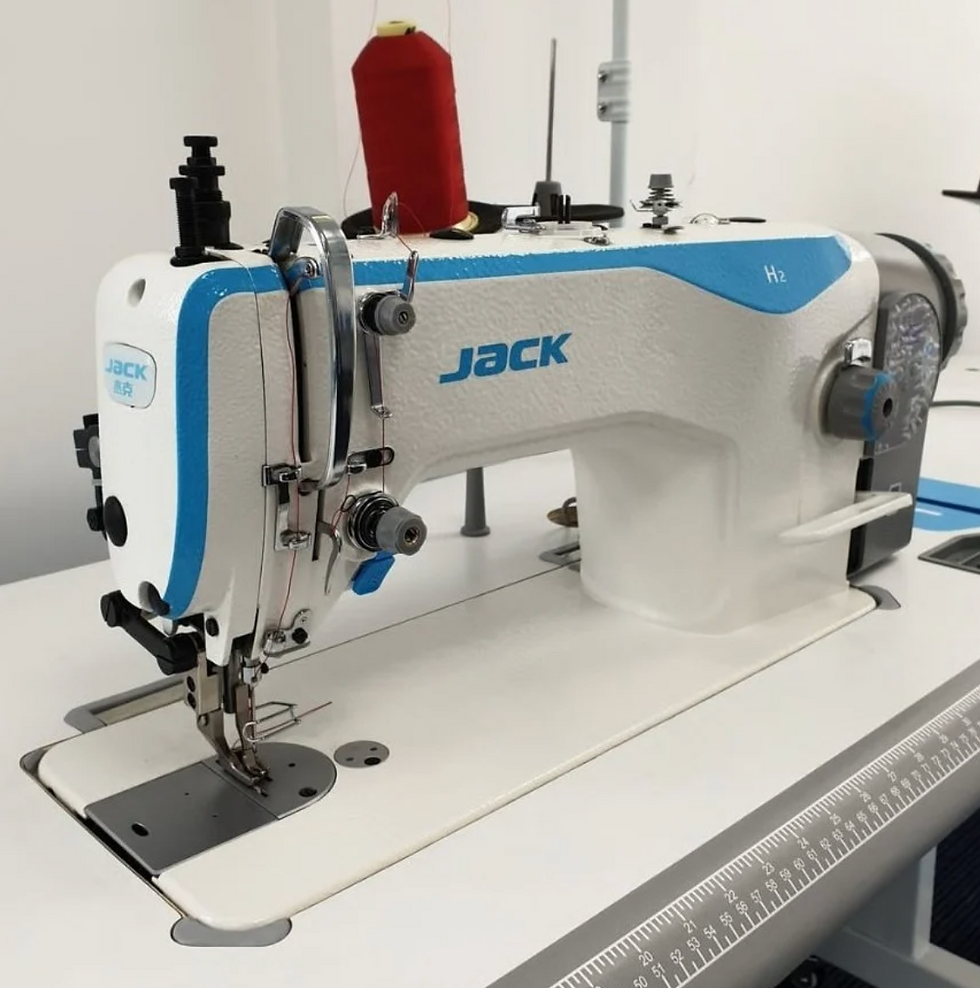What is Bobbin Tension?
- Jul 30, 2025
- 2 min read
And how do I adjust the Bobbin Tension?
What is Bobbin Tension?
Fundamentally, a stitch is a lock. The top thread and the bottom (bobbin) thread need to interlock perfectly in the middle of the fabric you're sewing. This is called a balanced stitch. It's not just about looking neat; an unbalanced stitch is structurally weak and can easily snag or pull apart.
Bobbin tension is the controlled resistance on your bottom thread. You adjust it to make sure that "lock" happens exactly where it's supposed to.
You don't need to mess with it all the time. In fact, for most standard sewing, you can set it and forget it. But you absolutely need to adjust it when you're troubleshooting or changing your materials.
Here are the main reasons you'd need to get in there and tweak the bobbin tension:
1. You're Changing Your Thread Weight
This is the number one reason. An industrial machine is built to handle everything from fine thread to thick, heavy-duty stuff. The standard tension setting is calibrated for a standard-weight thread.
Switching to a Thicker Thread: If you load a heavy thread (like for denim or canvas) into the bobbin, the old tension setting will be way too tight. The thick thread can barely squeeze through the tension spring. You'll need to loosen the tension to allow it to feed smoothly.
Switching to a Thinner Thread: If you switch to a very fine thread (for sheer fabrics, for instance), you might need to tighten the tension slightly to maintain control.
2. You're Getting Consistent Stitch Problems
You should always try to fix tension issues with the top dial first since it's easier. But if you've adjusted the top tension and are still seeing these problems, it's time to check the bobbin:
Problem: Loops on the Underside (looks like "railroad tracks")
Diagnosis: Your bobbin tension is too loose. The top thread is overpowering it, pulling loops of itself down to the bottom. The "lock" is happening too low.
Problem: Bobbin Thread is Visible on Top
Diagnosis: Your bobbin tension is too tight. It's winning the tug-of-war and pulling the top thread down through the fabric. The "lock" is happening too high.
3. You're Working with Extreme or Demanding Fabrics
While less common, moving between fabric extremes might require a minor adjustment.
Sheer/Delicate Fabrics: Too much tension on either thread can cause the fabric to pucker and bunch up. You might need a slightly looser, more balanced setup overall.
Heavy/Dense Fabrics (Leather, Vinyl): You need a strong, tight lock to ensure the stitch doesn't sit loosely on the surface. This requires ensuring your tension is adequate for the job.
In short: Adjusting the bobbin tension is about adapting your machine to your materials. It's the difference between a seam that just holds and a seam that is professionally constructed, strong, and perfectly integrated with the fabric. It’s a key part of getting the most out of a high-performance industrial machine.
Watch this video below to see how you adjust the bobbin tension



